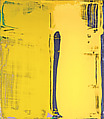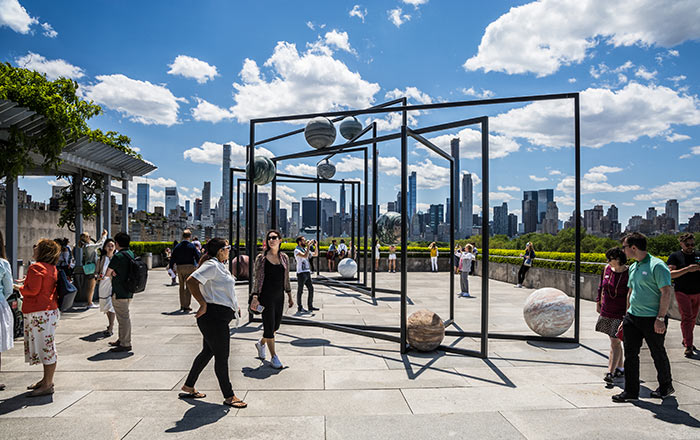Colombe d'Or
David Diao Chinese-American
Not on view
Colombe d’Or represents a career breakthrough for David Diao. It belongs to a small group of his "squeegee paintings" made between 1969 and 1973, an important period that cemented his reputation as a New York painter. Diao collected fifty-inch-long cardboard tubes, which had been discarded by garment factories, and repurposed them as "paint spreaders." By dragging different colors of paint across the canvas on the floor, layer by layer, he ceded control to the unwieldy nature of the instrument and the haphazard rolling of paint. This meticulous process allowed Diao to explore and display the tension between surface and structure.
At the time, the legacy of Abstract Expressionism served as a departure point for the artist and many of his peers. While the use of unconventional tools and the pooling effect of paint on the canvas signal Diao’s homage to New York School predecessors such as Jackson Pollock, Barnett Newman, and Helen Frankenthaler, his painting also critiques the modernist legacy that often denies its connection to external contexts. Named after a legendary restaurant in Saint-Paul de Vence in the south of France beloved by artists, which Diao had visited in 1972, Colombe d’Or marks Diao’s inclusion of social, geographical, and material context into his painting, no longer isolating the discourse of abstraction from the environment of its production and personal references. Colombe d’Or, with sweeping fields of green and yellow almost even in width, interrupted by a blue streak shooting upward in the middle, is among the first squeegee paintings in post-war art history.
This image cannot be enlarged, viewed at full screen, or downloaded.

